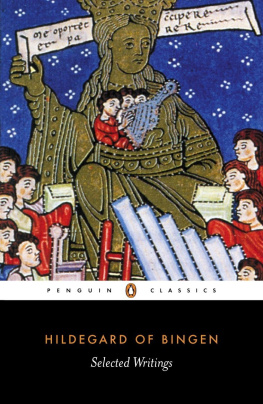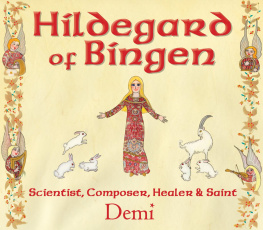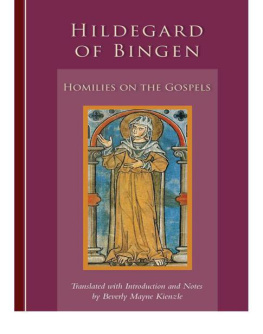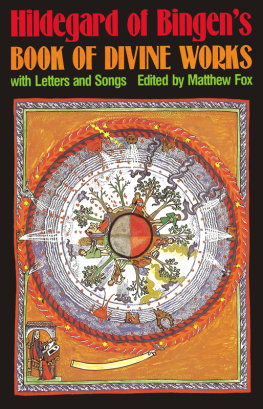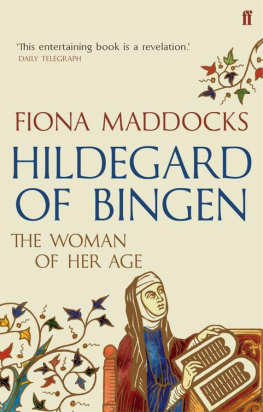Flanagan, a leading Hildegard scholar, has selected and translated a range of material, which makes the work of the twelfth-century visionary accessible to a popular audience. Selections are long enough to introduce readers to Hildegards style and the structure of her arguments without causing them (in the words of a commentator writing a generation after her death) to shrink from and avoid reading the books of Hildegard because of her difficult syle. Flanagan has preserved the style in her translation, but readers who do not shrink from it will find it rewarding; what some commentators have found difficult and unusual, many readers have found creative and insightful. Both style and content have contributed to Hildegards growing popularity more than eight centuries after her death. This collection includes mystical writings, writings in natural history and medicine, correspondence, narrative, and poetry, as well as a brief biography, a bibliography, and a discography for readers who wish to pursue Hildegards work further.
Steve Schroeder, Booklist
At last it is possible for the ordinary reader to get some idea of the energy and creativity of the great Hildegards mind. These translations of her spiritual and medical writing, her poetry and letters, are a remarkable contribution to the study of early women writers.
Monica Furlong, author of Merton: A Biography and Visions and Longings: Medieval Women Mystics
ABOUT THE BOOK
Visionary, mystic, poet, musician, naturalist, healer, theologianthe Rhineland nun Hildegard of Bingen (10981179) was a Renaissance woman long before there was a Renaissance. This is the first book in English to offer a representative selection of writings from all of her amazing range of work.
Hildegard wrote many volumes on subjects from mystical vision to sexuality, from theology to natural medicinein letters, treatises, poetry, and songsall in an age when few women wrote more than an occasional letter. She was a woman of extraordinary influence whose work not only surpassed that of her male contemporaries in its range, but also outshone them in visionary beauty and intellectual power. This collection includes a brief biography of Hildegard, and selections from the following works:
- Scivias (literally, know the ways), the record of Hildegards visions and her commentary on them
- The Book of Lifes Merits, visionary work
- The Book of Divine Works, a work of cosmology and anthropology
- Natural History, a record of plants, animals, and minerals, translated here into English for the first time
- Causes and Cures, a compendium of her writing on natural medicine
- Symphonia, her songs and poetry
- Biographical works
- Selected letters
SABINA FLANAGAN, Ph.D., is a visiting research fellow at the Universities of Adelaide and Melbourne, Australia. A scholar of Hildegard for many years, she is the author of the standard biography, Hildegard of Bingen: A Visionary Life.
Sign up to learn more about our books and receive special offers from Shambhala Publications.

Or visit us online to sign up at shambhala.com/eshambhala.

Secrets of God

WRITINGS OF HILDEGARD OF BINGEN
Selected and translated from the Latin by
SABINA FLANAGAN

SHAMBHALA
Boston & London
2013
Shambhala Publications, Inc.
Horticultural Hall
300 Massachusetts Avenue
Boston, Massachusetts 02115
www.shambhala.com
1996 by Sabina Flanagan, Ph.D.
All rights reserved. No part of this book may be reproduced in any form or by any means, electronic or mechanical, including photocopying, recording, or by any information storage and retrieval system, without permission in writing from the publisher.
Library of Congress Cataloging-in-Publication Data
Hildegard, Saint, 10981179.
[Selections, English. 1996]
Secrets of God: Writings of Hildegard of Bingen/selected and translated by Sabina Flanagan.
p. cm.
Includes bibliographical references and index.
Discography: p.
eISBN 978-0-8348-2862-9
ISBN 1-57062-164-0 (alk. paper)
I. Flanagan, Sabina. II. Title.
BX4700.H5A25 1996
282.092dc20
95-48805
CIP
For W. R. P.


Many people shrink from and avoid reading the books of Hildegard because she writes in such a difficult and unusual style, wrote Gebeno, prior of Eberbach, in 1220, about a generation after Hildegards death. Gebenos solution to the problem was to make a short selection of what he took to be the most important passages from a few of Hildegards works. He chose them according to his particular preoccupationthe approaching end of the world.
Today, interest in Hildegard encompasses everything she wrote, from theology to natural history, her music and songs, her social and moral ideas. It also extends to the person and personality of Hildegard herself. So the selection I have made is as wide-ranging as possible within the compass of a small book. In my selection I have chosen to translate substantial passages from Hildegards works in order to show how she develops an argument or elaborates a description. I have tried to include extracts that show her theological and scientific concerns, illustrate certain events in her life, and also display her in a variety of relationships with her contemporaries.
While attempting to render her Latin into readable English, I have not tried to reduce it to a conversational style. As Gebeno noted, Hildegards style was distinctive and not always transparent. Indeed, I am not sure that I have always managed to capture her exact meaning. However, my aim in this anthology and translation has been to convey the spirit, if not always the letter, of Hildegards work. To this end I have as far as possible used inclusive terms such as humankind and people, where Hildegard wrote some form of the inclusive homo, since the word men no longer serves that purpose in English. Following a tradition established in Hildegard translations I have sometimes used Man to refer to Adam and, by implication, the human race. Where Hildegard refers explicitly to a biblical passage I have used the translation of the Douay-Rheims version. However, in order not to overload the text with critical apparatus, I have not identified the many biblical echoes and near-quotations with which her work abounds. Such citations can usually be found in the Latin editions of her works.
Since I began my study of Hildegard almost twenty years ago, I have been assisted in numerous ways by an ever widening circle of Hildegard scholars, to whom this must serve as a general vote of thanks. In connection with the present work I wish particularly to thank Professors Albert Derolez and Peter Dronke, who kindly allowed me to consult a prepublication copy of their edition of the Liber Divinorum Operum (and especially Professor Derolez for assembling and forwarding the extracts from Ghent), and, somewhat closer to home, Paul Chandler, O. Carm., and Dr. Constant Mews of Melbourne, for their prompt dispatch of further much-needed texts.
Next page

